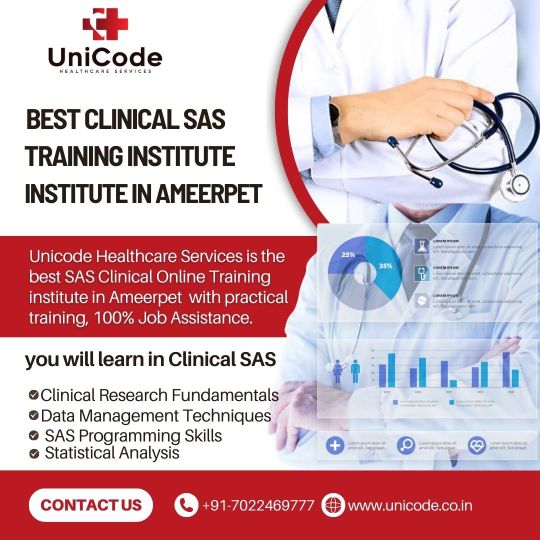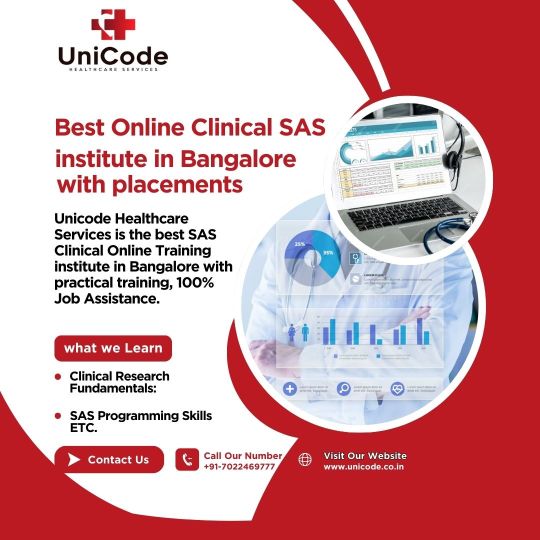#Institution Management System
Explore tagged Tumblr posts
Text
quite interesting how the valencian government cut the emergency services and last october there were unprecedently catastrophic floodings there, and how the city of los angeles cut the funding for the los angeles fire department and now there is a catastrophic fire going on. almost as if there was a pattern going on here...
#california#valencia#obviously climate change played a big part in this as well#but the damage wouldn't have been so huge - and by damage i mean human damage - if there were better public services available#to the public. also prevention !!!!! in valència the prevention systems failed. no idea what is the situation in la but prevention is key#also in the case of la. it doesn't help that for some fucking reason usamericans insist of building out of wood and not brick#anyways. i hope any people who reads this from la is safe. i am sorry for y'all and only y'all#i am also very angry for the getty mansion getting burnt#i know this wouldn't have happened if all those art pieces were publicly owned and managed#we have protocols in public museums that's kinda what i'm studying#private museums or art galleries or cultural institutions are incompatible with its own supposed function
20 notes
·
View notes
Text
i think working in emergency management would be so fitting for me and my interests. i used to be obsessed as a kid w the cold war and civil defense programs. but i couldn’t articulate what i wanted to know. i wanted to know why they were the way they were, why they made the choices they did and what they’re doing now in the same way. covid fascinated me bc of that. i worked for ups at the time and i loved reading the internal information system stuff about it bc it seemed they already had some plan and i wanted to be the people that did that.
#i love systems!! i love processes! i love how they go wrong and how they go right and developing ways to make them more resilient!!#also i care about people and i know there’s trust in institutions to continue functioning and like i want to be part of that.#so like emergency management or social work.#but thinking abt going back to school hurts bc i’ve already fucked up my financial aid bc i wasn’t really ready yet#oh well. my own fault. no one made me do that.#it hurts to think about what i could do bc it feels like those opportunities aren’t there for me anymore.#im only 23 but i still have nothing to show for it. i should have gotten a degree by now.#and ive tried but i couldn’t swing community college.#but also like. i didnt know then what i know now. but what if it doesn’t matter.#what if i really am just averse to doing anything.#i dont think i am but evidence seems to point to me being uh. pointless.
4 notes
·
View notes
Text
Well guess who's officially applied to Erasmus. I'm not even fully done uploading all relevant documents and I'm already kinda regretting it. I will HATE myself for this next winter.
I'm not really doing it for the courses (they all somehow seem easier than what mine is offering) but for the french, but it'd be awkward if I misjudged things completely and this is all worthless to my degree because I already learned it in the bac.
#on the other hand - easy classes means more free time. not an experience I've ever had during the semester#I'm also stupidly paranoid bc I'll be Old Tm (a whopping 24) by that time (still younger than most ppl in my degree bc school system)#but the french system seems like it's more doing the schoolish thing where most ppl manage in min time (very rare here) and are thus younge#at least my first ranked place seems like that. “institute of applied sciences” is not “university of technology” after all#personal#erasmus
1 note
·
View note
Text
Regulatory Environment of Financial Institutions.
Financial regulations are laws and rules that govern financial institutions. Regulations of financial institutions focus on providing stability to the financial system, fair competition, consumer protection, and prevention and reduction of financial crimes. By the mid-1970s, the global financial system witnessed market-oriented reforms that led to liberalization in the financial system, such as the reduction of interest rate controls, removal of investment restrictions on financial institutions and a line of business restrictions, and control on international capital movements. The modern trend observed is that financial sector regulation is moving toward a greater cross-sector integration of financial supervision. In 1998, the adoption of the Basel Accord, which required international banks to attain an 8% capital adequacy ratio was a major significant milestone in banking regulations. The collapse of the global financial system that led to the global crisis can be attributed to the systemic failure of financial regulation. Basel I defined bank capital and bank capital ratio based on two-tier systems. The Basel II framework consisted of Part 1, the scope of application and three pillars, the first one being minimum capital requirements, the second one a supervisory review process, and the third pillar is market discipline. The Basel III framework prepared new capital and liquidity requirements for banks.
Learn more about Regulatory Environment of Financial Institutions related to the publication - Strategies of Banks and Other Financial Institutions: Theories and Cases.
#Financial regulations#Regulations of financial institutions#financial security#financial industry#financial markets#financial risk management#bank capital ratio#Basel Accord#interest rate controls#international capital movements#banking system#4 december#sustainable development goals#international day of banks
2 notes
·
View notes
Text
Going Paperless: How a School and Education Management Software is Transfiguring Administrative Processes

Discover how school and education management software are transforming the education sector towards a sustainable and efficient future by facilitating paperless administrative processes. Contact to know more: [email protected] or call us at +91 99425 76886.
#startup#school#school system#marketing#school software#education software#management software#school management software#education management software#preschool#preskool#software#development#application#apps#education#college#university#academia#institute
3 notes
·
View notes
Text
Financial Institution ATM Transaction
Enhance your financial institution ATM transaction with seamless solutions. Ensure secure, efficient processing and improve customer satisfaction with top-notch ATM services. Learn more at Evernote and streamline your ATM operations today!
#nationallinkatm#cash vaulting services#atm installation companies#atm processing company#point of sale system#smart safe solutions#smart safe cash management#Financial Institution ATM Transaction
0 notes
Text




#Best Clinical SAS Training Institute in Hyderabad#Unicode Healthcare Services stands out as the top Clinical SAS training institute in Ameerpet#Hyderabad. Our comprehensive program is tailored to provide a deep understanding of Clinical SAS and its various features. The curriculum i#analytics#reporting#and graphical presentations#catering to both beginners and advanced learners.#Why Choose Unicode Healthcare Services for Clinical SAS Training?#Our team of expert instructors#with over 7 years of experience in the Pharmaceutical and Healthcare industries#ensures that students gain practical knowledge along with theoretical concepts. Using real-world examples and hands-on projects#we prepare our learners to effectively use Clinical SAS in various professional scenarios.#About Clinical SAS Training#Clinical SAS is a powerful statistical analysis system widely used in the Pharmaceutical and Healthcare industries to analyze and manage cl#and reporting.#The program includes both classroom lectures and live project work#ensuring students gain practical exposure. By completing the training#participants will be proficient in data handling#creating reports#and graphical presentations.#Course Curriculum Highlights#Our Clinical SAS course begins with the fundamentals of SAS programming#including:#Data types#variables#and expressions#Data manipulation using SAS procedures#Techniques for creating graphs and reports#Automation using SAS macros#The course also delves into advanced topics like CDISC standards
0 notes
Text
Understanding BBPS Bharat Connect: Revolutionizing Bill Payments in India
The Bharat Bill Payment System (BBPS) has transformed the landscape of bill payments in India, making it seamless, secure, and efficient for customers and businesses alike. One of the key players in this revolution is Bharat Connect, a trusted and robust solution provider within the BBPS ecosystem. This blog dives into what BBPS Bharat Connect entails, how it operates, and the role it plays in reshaping financial transactions.

What is BBPS?
BBPS, short for Bharat Bill Payment System, is a one-stop platform for bill payments that operates under the Reserve Bank of India (RBI) and is managed by the National Payments Corporation of India (NPCI). It integrates various billers, customers, and payment service providers, ensuring safe and hassle-free transactions.
The BBPS ecosystem has two key operational units:
Biller Operating Unit (BOU): Onboards billers (utility providers) to the BBPS network.
Customer Operating Unit (COU): Enables customers to make payments via BBPS through multiple channels, including banks, digital wallets, and apps.
Bharat Connect and BBPS - TSP
Bharat Connect serves as a trusted Technical Service Provider (TSP) in the BBPS ecosystem. A bbps TSP acts as a bridge, empowering banks and other financial institutions with technical infrastructure and operational support to seamlessly connect with the BBPS framework.
Why Choose Bharat Connect?
Comprehensive B2B Solutions: Bharat Connect provides end-to-end B2B Bharat Connect TSP services for banks and other financial institutions.
Agent Institution BBPS: Supports agent institutions by offering secure and reliable platforms for handling bill payments.
Unified Presentment Management System: Ensures smooth bill presentment and payment integration across multiple channels.
FASTag TSP: Enables effortless integration and management of FASTag payments under the BBPS ecosystem.
The Role of BBPS in Digital India
The AI-powered Bill Payment System BBPS enables secure, real-time payment processing for a wide range of services:
Utility bills (electricity, water, gas, etc.)
Telecom bills
Subscription fees
FASTag recharges and toll payments
Moreover, its advanced Settlement & Reconciliation system ensures that all transactions are accounted for and settled without discrepancies, fostering trust among customers, agents, and billers.
How Plutos ONE Empowers the BBPS Ecosystem
Plutos ONE is proud to be one of India’s youngest and most innovative BBPS - TSP providers. Here's how we’re making a difference:
Conversational AI Solutions: We enable bill payments through conversational platforms like WhatsApp, making the process user-friendly and accessible to a broader audience.
B2B Bharat Connect Services: Plutos ONE offers specialized TSP services for banks, ensuring seamless integration with the BBPS ecosystem.
Incentives on Transactions: We operate India’s largest Merchant-funded Offers Platform with over 400 online brands, driving engagement through rewards and offers for every transaction.
Clickpay: plutos ONE ClickPay allows you to create a trusted payment URL for direct consumer payments, enabling one-off payments with automated reminders.
Settlement & Reconciliation Excellence: Our advanced systems guarantee accurate and timely settlements, ensuring confidence for all stakeholders.
Merchant-Funded Offers Platform: We also manage card activation and offers platforms for banks, networks, and major brands.
With Plutos ONE, businesses not only gain access to cutting-edge Bharat Connect TSP solutions but also tap into the potential of India’s largest incentive platform.
The Future of Bill Payments with Bharat Connect TSP and BBPS
As digital payments continue to grow in India, systems like BBPS and TSP providers like Bharat Connect and Plutos ONE are critical in driving inclusion, efficiency, and innovation. By enabling Agent Institution BBPS and integrating systems like Unified Presentment Management, the BBPS ecosystem ensures a future where paying bills is just a click away for every Indian.
Plutos ONE is committed to empowering businesses and consumers by enhancing the efficiency of the BBPS ecosystem. From FASTag TSP services to AI-driven solutions, we’re shaping the future of bill payments, one transaction at a time.
Visit Plutos ONE to learn more about our cutting-edge solutions.
#BBPS - TSP#BBPS#Bharat Connect#Bharat Connect TSP#B2B Bharat Connect#B2B Bharat Connect TSP#FASTag TSP#bbps bou#biller operating unit#bbps cou#customer operating unit#agent institution bbps#unified presentment management system#bbps Settlement & Reconciliation#AI-Powered Bill Payment System bbps
1 note
·
View note
Text
Benefits of Institute Management System Software: A Modules Guide for Educational Institutions
Institute Management System is useful in the management of all academic & administrative operations in Educational institutions. Learn more about its benefits. For more information please visit us at https://www.academiaerp.com/blog/institute-management-system-software-benefits/
0 notes
Text
In todays fast-paced and dynamic work environment, effective management of employee attendance is critical for the smooth functioning of any organization. Traditional methods of tracking attendance, such as manual registers or punch cards, are becoming obsolete due to their inefficiency and susceptibility to errors. This is where an Attendance Management System (AMS) comes into play. Here’s why you need an attendance management system for your organization.
#software#coaching management software#coaching#school management software#coaching business#crm software#coaching institute#preschool management software#attendance management#attendance software#advance coaching#online examination system
0 notes
Text

Give your academic institution a competitive edge by embracing digitized operations.
Discover Core Competency's Institute Management System - corecompetency.net/products/institute-management-system/
0 notes
Text
Experience the Ultimate in School Bell Services in Dubai with Vivency's Automatic Bell System
Step into a new era of school bell management with Vivency Technology LLC's Automatic Bell System, renowned as the premier choice for school bell services in Dubai. Crafted specifically for educational institutions, our system offers:
Tailored Bell Schedules: Seamlessly adapt to your school's unique timetable.
Streamlined Announcement Management: Simplify school-wide announcements with precision.
Automated Bell Routines: Ensure consistent and punctual bell schedules without manual intervention.
Flexibility and Scalability: Grow effortlessly alongside your institution's evolving needs.
User-Friendly Interface: Navigate and control with ease thanks to our intuitive design.
Integration Capabilities: Harmonize with existing educational platforms for enhanced functionality.
Elevate your school's efficiency and reliability with Vivency's Automatic Bell System. Discover unparalleled excellence in school bell services today! Learn more
#School Bell Services#Dubai#Vivency Technology LLC#Automatic Bell System#Bell Management#Educational Institutions#Customizable Bell Schedules#Announcement Management#Automated Bell Routines#Flexibility and Scalability#Easy-to-Use Interface#Integration with Other Systems#Efficiency#Reliability#School Bell Solutions
0 notes
Text
The 2008 Market Crash: Causes, Impacts, and Lessons Learned
l. Introduction The 2008 market crash stands as one of the most significant financial upheavals in modern history, reshaping economies and livelihoods around the globe. Understanding the causes and impacts of this crisis is crucial for navigating future economic challenges. ll. Background of the 2008 Market Crash A. Economic conditions leading up to the crash Prior to 2008, the United States…

View On WordPress
#2008 financial crisis#2008 market crash#economic impact#financial crisis#financial institutions#financial regulation#financial regulation failures#financial system flexibility#global financial meltdown#global recession#government dole#government intervention#housing market collapse#Lesson learned#Market Crash#Responsible lending practices#Risk Management#role of the central bank#subprime lending#subprime mortgage crisis
0 notes
Text
I also really, truly, from the bottom of my heart hate the way that this aspect of autism has been woobified into "aw only dino nuggets and boxed mac n cheese for me" as if there arent autistic people all over the world for whom these foods fall into the category of "can't eat".
i grew up to realize that most people just cannot fundamentally relate to the kind of dislike that autistic people are capable of having for food. like i know what foods i just kinda dislike, if you put slices of swiss cheese or avocado in front of me i would munch on it and grimace a little, but i am incompatible with baked beans. it feels like soggy gritty clay on my teeth, it's physically painful to me.
i remember when i was little, i tried chicken for the first time in class during a special food day of some sort. it was a little piece of dry white meat, and it made me scream and fall on the floor with how it felt in my mouth. the adults around me tried to make this an important lesson, how even if i don't like someone's food I should be polite, but i'd been hurt by that chicken. now i know that irritation just isn't physically painful for most people.
#there's also an institutional aspect to this I've managed to carefully dance around eating school lunch/hospital food/other mass food system#food most of my life because I just can't eat it in a normal way#if I ever found myself in an inpatient psych ward I'd probably barely eat#its not a “pickiness” thing I eat a lot of foods most people put on picky eater lists and I've never been labeled as such#its purely a sensory thing#I'll opt for food thats closest to eating wet sand or slop over some of the texture combinations available
10K notes
·
View notes
Text
Revolutionizing Education Management: The Role of ERP Software in Educational Institutes
In today's digital age, Educational Institutes are no exception to the transformative power of technology. Just as businesses have embraced Enterprise Resource Planning (ERP) software to streamline operations, educational institutions are increasingly turning to ERP solutions to enhance efficiency, collaboration, and student outcomes. ERP software offers a comprehensive platform to manage various aspects of educational institutes, including student information, academic programs, finances, human resources, and more. In this blog post, we'll delve into the significance of ERP software in educational institutes and how it is revolutionizing the management of these institutions.
Understanding ERP Software for Educational Institutes
ERP software for educational institutes is a centralized system that integrates various functions and departments within an educational institution. It provides a unified platform for managing student data, academic programs, administrative tasks, and financial operations. Unlike traditional systems that rely on separate software applications for different functions, ERP software offers a holistic approach to managing all aspects of an educational institute.
Key Features and Benefits
Centralized Student Information Management: One of the primary features of ERP software for educational institutes is the centralized management of student information. From admissions and enrollment to attendance tracking and academic progress, ERP systems store and organize comprehensive student records in a single database. This streamlines administrative tasks and provides educators with quick access to relevant student data, facilitating informed decision-making and personalized support for students.
Efficient Academic Program Management: Educational institutes offer diverse academic programs, courses, and curricula, each with its own set of requirements and resources. ERP software enables administrators to efficiently manage academic programs by automating course scheduling, resource allocation, and faculty assignments. This ensures optimal utilization of resources and minimizes scheduling conflicts, ultimately enhancing the academic experience for students and faculty members alike.
Financial Management and Reporting: Managing finances in educational institutes can be complex, with multiple revenue streams, expenditures, and budget allocations to track. ERP software simplifies financial management by integrating accounting processes, budgeting, procurement, and payroll functions into a unified system. It enables administrators to generate accurate financial reports, monitor budgets in real-time, and ensure compliance with regulatory requirements, thereby improving financial transparency and accountability.
Human Resources and Staff Management: Effective staff management is essential for the smooth functioning of educational institutes. ERP software facilitates the management of human resources by automating processes such as recruitment, employee onboarding, performance evaluation, and leave management. By centralizing HR functions, educational institutions can streamline administrative workflows, enhance communication between staff members, and foster a collaborative work environment.
Data Analytics and Decision Support: ERP software for educational institutes is equipped with robust analytics capabilities that enable administrators to derive actionable insights from vast amounts of data. By analyzing student performance trends, enrollment patterns, and resource utilization metrics, educational institutions can make data-driven decisions to improve academic outcomes, optimize operations, and enhance the overall student experience.

Implementation Challenges and Best Practices
While ERP software offers numerous benefits for educational institutes, implementing and integrating such systems can pose challenges. Common implementation challenges include resistance to change, data migration issues, staff training requirements, and customization complexities. However, with careful planning, stakeholder engagement, and effective change management strategies, these challenges can be overcome.
Best practices for successful ERP implementation in educational institutes include:
Stakeholder Engagement: Involve key stakeholders, including administrators, faculty members, staff, and IT personnel, in the implementation process from the outset. Solicit their input, address concerns, and ensure buy-in to maximize adoption and success.
Comprehensive Training Programs: Provide comprehensive training programs to ensure that all users are proficient in using the ERP system. Offer training sessions, workshops, and online resources tailored to the specific needs of different user groups.
Data Migration and Integration: Prioritize data migration and integration to ensure seamless transition from legacy systems to the new ERP platform. Cleanse and standardize data, establish data mapping protocols, and conduct thorough testing to validate data accuracy and integrity.
Customization and Configuration: Customize the ERP system to align with the unique requirements and workflows of the educational institute. Work closely with vendors and consultants to configure the system according to specific needs while minimizing unnecessary customizations.
Continuous Improvement and Support: Implement a culture of continuous improvement and support to optimize the use of the ERP system over time. Regularly solicit feedback from users, monitor system performance, and provide ongoing training and technical assistance as needed.
Future Trends and Innovations
As technology continues to evolve, ERP software for educational institutes is poised to undergo further advancements and innovations. Some emerging trends and future directions in this space include:
Cloud-Based Solutions: The adoption of cloud-based ERP solutions is on the rise, offering scalability, flexibility, and cost-effectiveness for educational institutes. Cloud-based ERP systems enable anytime, anywhere access to data and applications, facilitating remote learning and administrative operations.
Mobile Applications: Mobile applications are becoming increasingly prevalent in ERP software for educational institutes, allowing students, faculty, and staff to access essential functions and information on smartphones and tablets. Mobile apps enhance convenience, accessibility, and engagement, empowering users to stay connected and productive on the go.
Integration with Learning Management Systems (LMS): Integration between ERP systems and Learning Management Systems (LMS) is becoming more seamless, enabling educational institutes to streamline academic workflows, such as course management, grading, and content delivery. Integrated ERP-LMS solutions provide a unified platform for managing both administrative and academic functions, enhancing efficiency and collaboration.
Data Analytics and Predictive Insights: The use of advanced analytics and predictive modeling techniques is gaining traction in ERP software for educational institutes. By harnessing the power of data analytics, educational institutions can gain deeper insights into student behavior, performance trends, and outcomes, enabling proactive interventions and personalized support strategies.
Artificial Intelligence (AI) and Automation: AI-powered features, such as chatbots, virtual assistants, and predictive analytics, are being integrated into ERP systems to automate routine tasks, improve decision-making, and enhance user experiences. AI-driven automation can streamline administrative processes, reduce manual effort, and optimize resource allocation in educational institutes.
In conclusion, ERP software plays a pivotal role in revolutionizing the management of educational institutes by providing a centralized platform for integrating and optimizing various functions and processes. From student information management and academic program administration to financial management and analytics, ERP systems offer a comprehensive solution to meet the diverse needs of educational institutions. By embracing ERP software and leveraging emerging trends and innovations, educational institutes can enhance efficiency, collaboration, and student outcomes in the digital age. Learn more
#erp software for Educational institutes#erp solutions for educational institutions#account management system#erp software for Education#erp for Educational institutions
0 notes
Text
1 note
·
View note